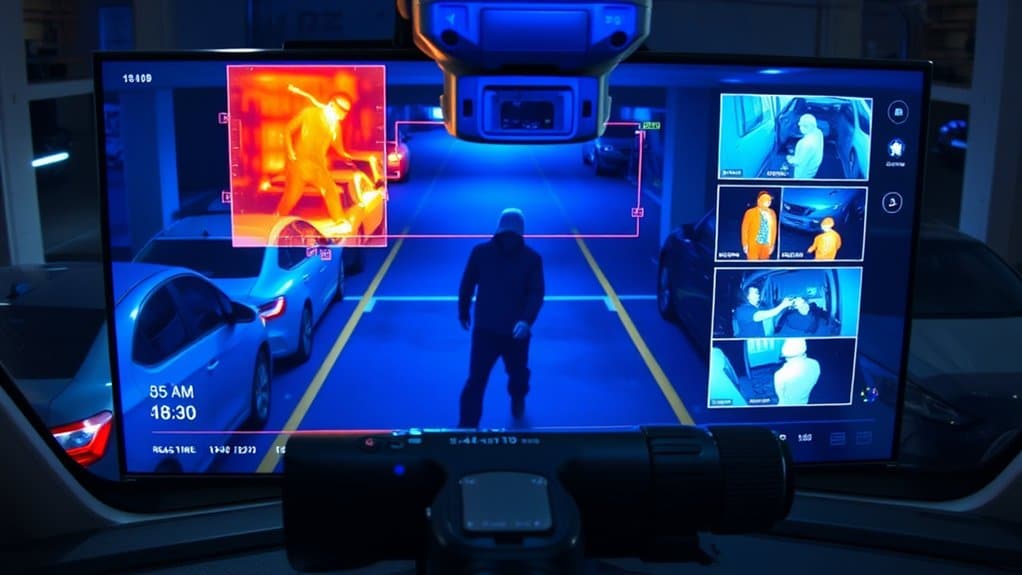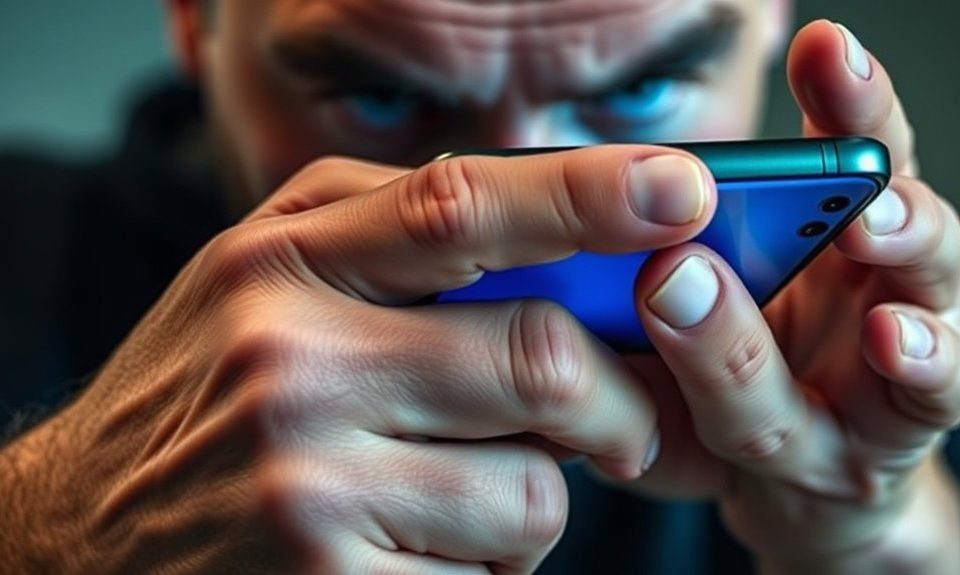Professional investigators utilize multiple surveillance methods to track unfaithful spouses. These include traditional physical monitoring through strategic observation points, digital investigation of social media profiles, and forensic analysis of electronic devices. Background checks and witness interviews provide additional verification of suspicious behaviors. Investigators document all findings systematically while adhering to legal requirements. Understanding these thorough techniques reveals the methodical nature of professional infidelity investigations.
Key Takeaways
- Professional surveillance combines discreet physical monitoring with detailed documentation of subject behavior, patterns, and interactions during systematic stakeouts.
- Digital investigation techniques analyze social media profiles, dating apps, and smartphone data to uncover hidden communications and location history.
- Background checks examine public records, financial documents, and online activity to identify suspicious patterns or unexplained expenses.
- Witness interviews gather testimonials from friends, family, and colleagues about unusual behaviors while maintaining discretion and confidentiality.
- Evidence collection follows legal standards, including proper documentation and chain of custody, to ensure admissibility in court proceedings.
Why Professional Surveillance Methods Matter

While amateur surveillance tactics often lead to compromised investigations and legal complications, professional surveillance methods form the foundation of successful private investigative work. Professional investigators understand the ethical implications of their actions and maintain strict client confidentiality throughout the process. They utilize systematic approaches that preserve evidence integrity while remaining within legal boundaries.
These methods distinguish themselves from amateur attempts through careful documentation, proper equipment usage, and strategic planning. Professional surveillance incorporates established protocols that protect both the investigator and client from potential liability. By following industry-standard procedures, investigators can gather admissible evidence while respecting privacy laws. This methodical approach guarantees that collected information remains viable for legal proceedings, should they become necessary. The difference between amateur and professional surveillance often determines an investigation’s ultimate success or failure. Companies like Stillinger Investigations employ advanced OSCOR technology to ensure comprehensive surveillance results that withstand judicial scrutiny.
Traditional Physical Monitoring Techniques
Professional surveillance requires mastery of fundamental physical monitoring techniques that have remained effective for decades. Experienced investigators employ covert observation methods from strategic vantage points, maintaining visual contact while staying undetected. This includes selecting inconspicuous vehicles for stakeouts and positioning them where they blend naturally with the environment.
Stakeout strategies involve systematic documentation of the subject’s patterns, including arrival and departure times, regular contacts, and daily routines. Investigators must remain patient during long observation periods while staying alert to subtle changes in behavior. They often work in rotating shifts to maintain consistent coverage while avoiding detection. Physical monitoring also requires adaptability, as investigators must smoothly shift between stationary observation and mobile surveillance when subjects become mobile. The team at Stillinger Investigations utilizes advanced surveillance technology to gather comprehensive evidence during physical monitoring operations.
Digital Investigation and Social Media Analysis
In recent decades, digital investigation techniques have become vital tools in the private investigator’s arsenal, complementing traditional surveillance methods. Modern investigators employ social media profiling to analyze patterns, connections, and behavioral indicators across multiple platforms.
Investigators examine a subject’s digital footprint through various online activities, including public posts, comments, check-ins, and shared media. They monitor friend lists, group memberships, and interaction patterns to establish timelines and identify potential connections of interest. Professional investigators also analyze metadata from digital photos, which can reveal location data and device information.
These digital methods often provide important evidence that may be otherwise impossible to obtain through physical surveillance alone, offering investigators a thorough view of a subject’s activities and relationships. Investigators must maintain ethical data collection practices while gathering social media evidence to ensure the legitimacy and admissibility of their findings.
Advanced Technology Tools in Modern PI Work

Modern private investigators rely on an extensive array of sophisticated technology tools that extend far beyond basic digital surveillance. GPS tracking devices enable PIs to monitor vehicle movements with pinpoint accuracy, providing detailed location data and travel patterns that can establish routines and verify alibis.
Mobile forensics has become an indispensable component of investigative work, allowing specialists to recover deleted messages, photos, and call logs from smartphones and tablets. These tools can reveal communication patterns and digital breadcrumbs that subjects may have attempted to conceal. Professional investigators combine these advanced technologies with traditional surveillance methods, creating a thorough approach that leaves little room for deception. This integration of cutting-edge tools with time-tested techniques has revolutionized how evidence is gathered and cases are solved. Call detail records provide investigators with comprehensive telecommunication transaction data that can reveal critical patterns of communication and movement.
Legal Considerations and Evidence Collection
While advanced technology expands investigative capabilities, private investigators must operate within strict legal boundaries when gathering evidence. Understanding legal guidelines and evidence admissibility requirements guarantees collected information can be used effectively in court proceedings.
| Evidence Type | Legal Requirements | Admissibility Factors |
|---|---|---|
| Photos/Video | Public spaces only | Clear chain of custody |
| Audio Records | One-party consent | No tampering evidence |
| GPS Tracking | Vehicle ownership | Court authorization |
| Digital Data | Lawful access | Proper documentation |
| Documents | Public records | Original sources |
Investigators must maintain detailed documentation of their methods, establishing proper chains of custody for all evidence gathered. This includes recording dates, times, locations, and circumstances under which evidence was obtained. Following these protocols protects both the investigator and client while guaranteeing collected evidence meets court admissibility standards. Mobile device forensics can provide crucial evidence through the recovery of deleted messages, call logs, and location data when legally obtained.
Signs That Warrant Professional Investigation
Recognizing when to enlist professional investigative services requires careful evaluation of specific warning signs and circumstances. When a spouse exhibits multiple suspicious behaviors like unexplained absences, secretive phone habits, or sudden changes in routine, these patterns may justify professional surveillance. Emotional distance, including withdrawal from family activities or intimate connections, often signals underlying issues that warrant deeper investigation.
Other significant indicators include unusual financial transactions, defensive reactions to basic questions about whereabouts, or the emergence of unverifiable explanations for time spent away from home. Working late frequently, new gym memberships, or sudden interest in appearance may also raise legitimate concerns. Professional investigators can help distinguish between paranoia and genuine signs of infidelity through systematic observation and evidence gathering. Digital footprint analysis has become an essential tool for investigators to uncover hidden communications and social media activities that may indicate unfaithful behavior.
Frequently Asked Questions
How Long Does a Typical Infidelity Investigation Take to Complete?
The average investigation duration typically ranges from 2-4 weeks, though varying case factors like surveillance needs, evidence gathering complexity, and subject patterns can extend or shorten timeframes notably.
What Happens if the Suspected Spouse Discovers They’re Being Investigated?
Discovery of surveillance typically creates significant emotional fallout and permanently alters relationship dynamics. The investigated party may become defensive, confrontational, or withdraw, while trust becomes increasingly difficult to rebuild.
Can Evidence Gathered by a Private Investigator Affect Divorce Settlements?
Professional investigator evidence can substantially impact divorce negotiations when properly obtained and admissible in court. Documentation of infidelity or hidden assets often strengthens a client’s position during settlement discussions.
Do Private Investigators Work With Divorce Attorneys During Infidelity Cases?
Private investigators frequently maintain strategic collaboration with divorce attorneys, sharing documented evidence and witness statements. This professional partnership offers legal advantages when building infidelity cases for court proceedings.
How Much Does Hiring a Private Investigator for Infidelity Surveillance Cost?
Private investigator fees vary based on multiple cost factors, typically ranging from $50-200 hourly. Service packages may include surveillance, GPS tracking, and digital monitoring, with retainers starting around $1000-3000.
Conclusion
Professional surveillance methods remain essential tools for uncovering infidelity, combining both traditional and digital investigation techniques. While technology has expanded the scope of evidence gathering, successful investigations still require careful adherence to legal boundaries and documented proof. Investigators must maintain objectivity while systematically collecting verifiable evidence through established protocols. The key lies in methodical observation and detailed documentation rather than emotional assumptions.






